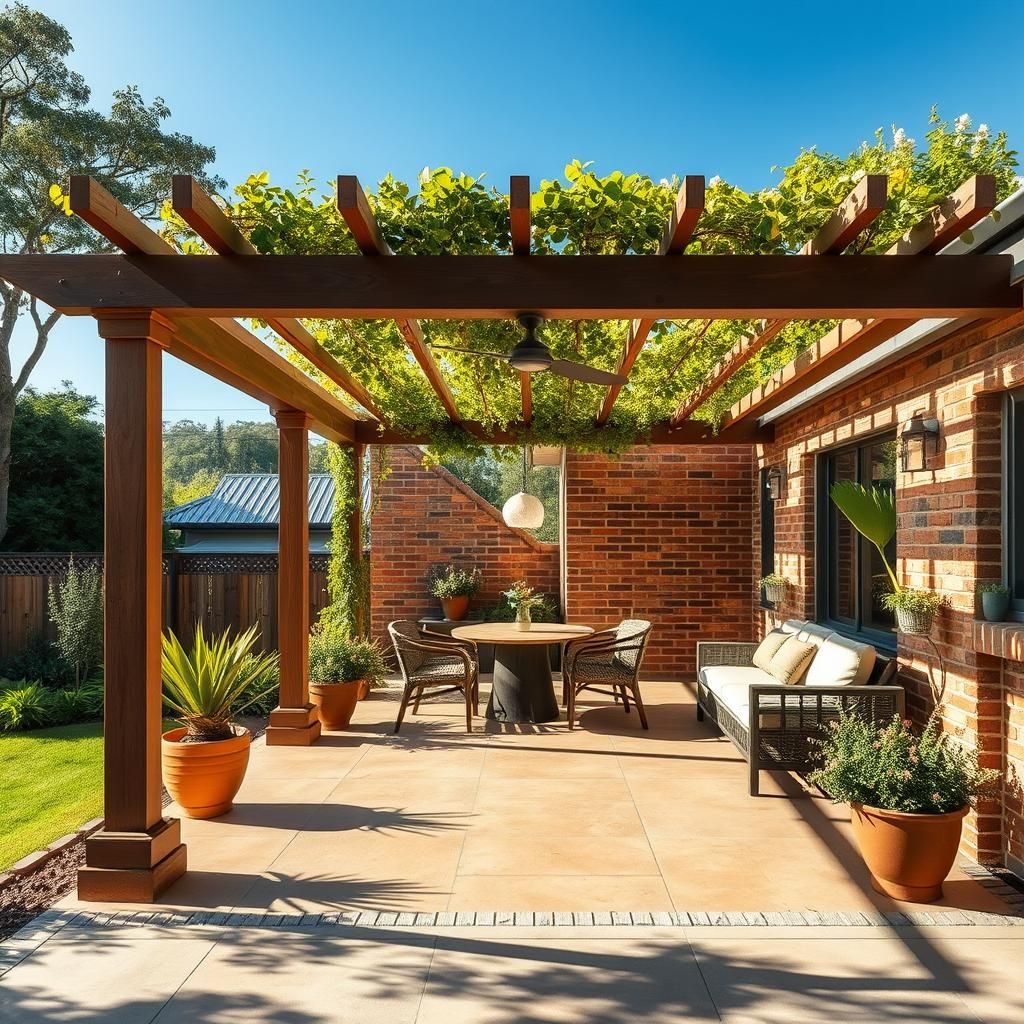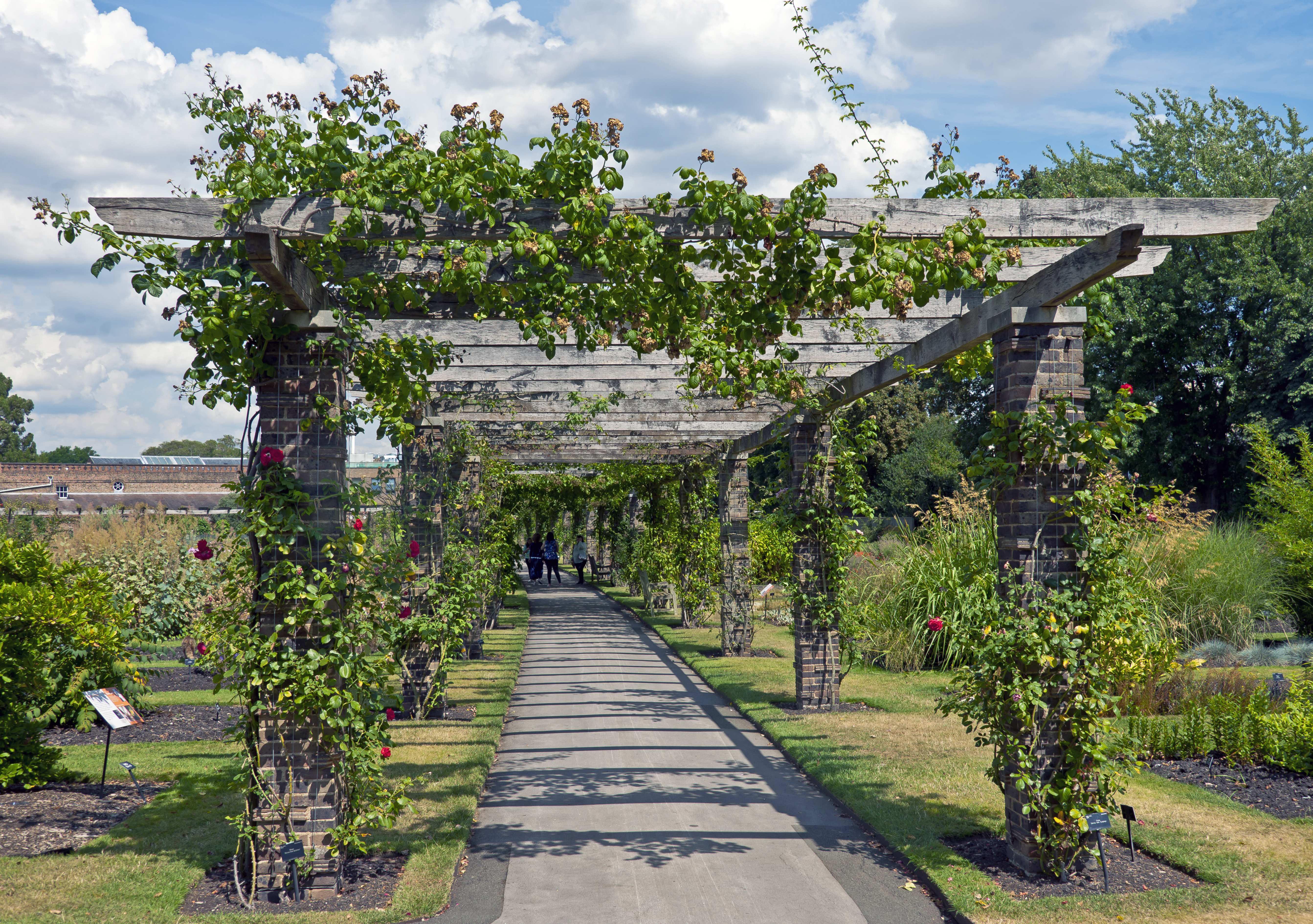What is a Pergola in Australia? Explore Its Uses, Benefits, and Styles

A pergola is a popular outdoor structure in Australia, offering shade, aesthetic appeal, and versatile uses for residential and commercial spaces. Traditionally constructed with posts and an open roof of beams, pergolas serve as a delightful extension of living areas, enhancing gardens and patios. In this article, we will explore the various uses of pergolas, including entertainment and relaxation spaces, their numerous benefits such as increased property value, and the diverse styles available to suit different tastes and architectural designs. Discover how a well-designed pergola can transform your outdoor experience while adding charm to your Australian home.
What is a Pergola in Australia?
A pergola in Australia is an outdoor structure that typically consists of a framework covered with open beams or latticework, designed to provide partial shade and a decorative element to gardens, patios, and backyards. These structures are often used to support climbing plants and vines, creating a natural canopy that enhances the outdoor experience. In Australia, where outdoor living is a significant part of lifestyle, pergolas are frequently constructed from materials such as timber, aluminium, or steel, ensuring durability against the harsh climate while adding aesthetic appeal to residential properties.
Types of Pergolas
There are various types of pergolas that cater to different styles and preferences. Some popular types include traditional wooden pergolas, which offer a classic and rustic look, and modern designs, which may utilize materials like aluminium or steel for a sleek finish. Additionally, there are attached pergolas that connect directly to the home, providing an extension of the indoor living space, and freestanding pergolas that can be placed anywhere in the yard for a more versatile outdoor setting.
Materials Used in Pergola Construction
The choice of materials in pergola construction plays a crucial role in its durability and maintenance. Common materials include timber, which offers a warm and natural appearance but requires regular upkeep. Aluminium is another popular option as it is lightweight, resistant to rust, and available in various colors and finishes. Composite materials, which combine wood and plastic, provide additional resistance to weather elements, making them a robust choice for long-lasting pergolas.
Benefits of Having a Pergola
Owning a pergola offers numerous benefits that enhance outdoor living. Firstly, it provides partial shade, making outdoor areas more comfortable during hot days. Secondly, it serves as a visual focal point, enhancing the landscaping aesthetics and often increasing property value. Thirdly, pergolas can create an ideal setting for outdoor entertaining, providing a defined space for gatherings, barbecues, or simply relaxing with family and friends.
Permits and Regulations
Before constructing a pergola, it's essential to check local building regulations and permits, as these can vary significantly across different regions in Australia. Depending on the size and height of the pergola, you may need a permit to ensure the structure complies with zoning laws and safety standards. Most local councils have specific guidelines regarding setbacks, heights, and design considerations that need to be adhered to before construction begins.
Design Considerations for Pergolas
When designing a pergola, homeowners should consider various factors such as the size, location, and intended use of the structure. The size of the pergola should match the proportions of the surrounding area and the existing architecture. The location is also critical; placing the pergola in a spot that maximizes shade and views while minimizing wind exposure can enhance its usability. Furthermore, incorporating elements such as lighting, fans, or heaters can make the pergola more functional throughout different seasons.
| Feature | Traditional Wooden | Modern Aluminium | Freestanding | Attached |
|---|---|---|---|---|
| Maintenance | High | Low | Medium | Medium |
| Aesthetic | Classic | Sleek | Natural | Integrated |
| Cost | Varies | Generally higher | Variable | Lower |
What is the difference between a pergola and a patio in Australia?

The difference between a pergola and a patio in Australia is primarily based on their structural design, purpose, and materials used. While both are outdoor features designed to enhance living space, they serve different functions and come with distinct characteristics.
Definition of a Pergola
A pergola is an outdoor structure consisting of a framework covered with trained climbing or trailing plants. It typically features vertical posts or pillars that support crossbeams and an open lattice roof. This allows sunlight to filter through while providing partial shade. Pergolas are often used to create an aesthetically pleasing outdoor area that defines a specific space.
- Open structure allowing sunlight and air circulation.
- Often adorned with plants for added beauty.
- Primarily serves decorative purposes and creates visual interest in gardens.
Definition of a Patio
A patio is a paved outdoor area that is typically used for dining or recreation. It is usually made from materials like concrete, stone, or tiles, providing a solid and durable surface. Patios can be attached to a home or freestanding in the yard, and they are designed for various outdoor activities, including barbecues, lounging, or gatherings.
- Solid surface ideal for outdoor furniture and activities.
- Usually built to be more functional than decorative.
- Can be covered or uncovered, but typically does not have a roof structure like a pergola.
Materials Used
The materials used in constructing a pergola and patio can vary significantly. A pergola is commonly made from wood or metal, with the primary goal of providing a structure that allows for vertical growth of plants. In comparison, patios are often constructed using hardscape materials like concrete, brick, or stone, leading to a more permanent and sturdy installation.
- Pergolas are often crafted from timber or aluminum.
- Patios utilize durable materials like concrete, bricks, or tiles.
- Different materials contribute to the aesthetic and functional purposes of each structure.
Purpose and Use
The purpose of pergolas and patios also differs. Pergolas are mainly designed as garden features that enhance the beauty of outdoor spaces and provide a degree of shelter from the sun. Conversely, patios are focused on usability, providing a space for relaxation, eating, and activities, often functioning as an extension of indoor living areas.
See also:
- Pergolas enhance the aesthetic appeal of outdoor spaces.
- Patios provide practical areas for outdoor living and entertainment.
- They can work together to create a harmonious and functional landscape.
Design and Style
The design aesthetics of pergolas and patios can cater to different tastes and styles. Pergolas often feature intricate designs with arches or trellises, fitting various garden themes. Patios, on the other hand, come in various shapes and finishes and can be tailored to complement the architecture of the home or the surrounding landscape.
- Pergolas can be customized with various styles, colors, and plant choices.
- Patios can have different patterns and arrangements depending on the chosen materials.
- Both structures can enhance property value and curb appeal when designed thoughtfully.
Why do they call it a pergola?

The term pergola has its roots in the Latin word pergola, which means a projecting eave. This structure dates back to ancient Roman gardens where it was designed to create shaded pathways or walkways, often supported by vertical posts or columns. The function of a pergola is to enhance outdoor spaces, providing a framework for climbing plants while adding aesthetic value to gardens or patios. The name has been retained through centuries as the design evolved, becoming a popular feature in landscapes for its combination of beauty and utility.
The Historical Significance of Pergolas
Pergolas have a profound historical significance, originating in ancient Rome and associated with the grand gardens of that period. Their purpose was to create outdoor spaces that offered both shelter and beauty. Additionally, they served as areas for relaxation and gathering, emphasizing the importance of nature in architectural designs. Here are some key points:
- Used in Roman villas for shade and beauty.
- Symbolic of luxury and refinement in landscaping.
- Influenced garden architecture in Europe throughout the centuries.
The Architectural Features of Pergolas
Pergolas are distinguished by their structural simplicity and elegance. Typically consisting of an open framework with beams and columns, they are designed to support climbing plants while allowing sunlight to filter through. The design can vary widely, from rustic wooden structures to modern metal installations. The essential features include:
- Vertical posts or columns for support.
- Crossbeams spanning the top for coverage.
- Open design permitting light and airflow.
The Modern Use of Pergolas
In contemporary landscaping, pergolas have evolved to serve a variety of functions beyond their traditional roles. They are now common in residential yards, parks, and commercial spaces, often serving as focal points. Modern designs may incorporate materials like aluminum, vinyl, and steel. Their uses include:
- Creating outdoor living rooms or dining areas.
- Providing support for outdoor lighting and decor.
- Enhancing privacy with vertical plant installations.
The Aesthetic Appeal of Pergolas
The aesthetic appeal of pergolas lies in their versatility and ability to complement various design styles. From rustic gardens to sleek modern patios, a pergola can enhance the overall appearance of an outdoor space. They can be adorned with lights, fabric, and climbing plants, such as wisteria or roses, which can create a beautiful backdrop for any setting. Some notable aspects include:
- Adaptable to different landscape styles.
- Enhances the natural environment.
- Offers opportunities for decorative elements.
The Cultural Variations of Pergolas
Around the world, pergolas are known by various names and built in diverse styles reflecting local cultures. In regions with different climates and traditions, the design and materials used can vary significantly. Some examples of cultural variations include:
- Trellises in Italian gardens for supporting vines.
- Pavilions in Asian gardens that serve similar functions.
- Arbors in America used for walks or entrances.
What do Americans call a pergola?

Pergolas are commonly referred to as pergolas in the United States. The term is widely recognized and understood among Americans, particularly in landscaping and outdoor design contexts. While many might also use terms like arbor or trellis, these have slightly different connotations, with arbor typically being a more enclosed structure than a pergola, and trellis usually referring to a vertical framework that supports climbing plants.
Characteristics of Pergolas
Pergolas are outdoor structures that provide shade and protection from the elements while still allowing sunlight to filter through. These structures are not enclosed, which distinguishes them from other outdoor features like gazebos. Key characteristics include:
- Open-roof design: Pergolas typically consist of vertical posts supporting crossbeams and an open lattice, providing partial sun coverage.
- Material options: They can be constructed from various materials, such as wood, vinyl, or metal, depending on aesthetic preferences and durability needs.
- Integration with plants: Pergolas are often adorned with climbing plants, such as vines or flowers, enhancing their beauty and creating additional shade.
Common Uses of Pergolas
In American landscapes, pergolas serve multiple purposes, often enhancing the outdoor living experience. Their common uses include:
- Outdoor dining areas: Many homeowners place pergolas over patios or decks to define their dining spaces, allowing for comfortable meals outside.
- Shade providers: They offer a significant amount of shade while allowing air to circulate, making them ideal for relaxation areas.
- Garden features: Pergolas can act as focal points in a garden, creating pathways or accents for seasonal flowers and plants.
Building a Pergola
When it comes to construction, building a pergola requires careful planning and design. Here are some considerations for those looking to build one:
See also:
- Site selection: Choosing the right location is critical; it should be a space that receives a good balance of sunlight and shade.
- Design style: Decide on a design that complements the existing architecture and landscaping, considering both traditional and contemporary styles.
- Permits: Check local building codes and regulations, as permits may be required for construction.
Maintenance of Pergolas
To keep a pergola looking its best and ensuring its durability, regular maintenance is essential. The following tips are helpful:
- Cleaning: Regularly clean the structure to remove dirt, debris, and any plant growth that may accumulate over time.
- Protective treatments: If made of wood, applying sealants or stains can protect against weather damage and prolong its life.
- Seasonal checks: Inspect the structure periodically for any signs of wear or damage, addressing any issues promptly.
Pergolas vs. Other Structures
While pergolas share some similarities with other outdoor structures, they have distinct differences. Here’s a comparison with some commonly confused structures:
- Gazebo: Unlike a pergola, a gazebo is typically a fully enclosed structure with a solid roof, providing more protection from the elements.
- Trellis: A trellis is generally a more simplistic and vertical framework, often used primarily for supporting climbing plants.
- Arbor: An arbor is a smaller structure than a pergola and is often used as an entrance into garden spaces, frequently adorned with climbing plants.
What is the Australian building code for a pergola?

The Australian building code for a pergola is outlined in the National Construction Code (NCC) and varies by state and territory. A pergola is generally considered a structure that provides shade or shelter but is not fully enclosed. The NCC specifies certain requirements to ensure that pergolas are safe, structurally sound, and comply with local zoning laws. These requirements usually include considerations related to height, distance from property boundaries, and materials used for construction.
Key Regulations for Pergolas
The regulations for constructing a pergola under the Australian building code typically focus on safety and structural integrity. These regulations may include:
- Height Restrictions: Depending on local council regulations, the maximum height of a pergola may be limited.
- Setback Rules: A minimum distance from property boundaries may be required to prevent encroachment on neighboring properties.
- Structural Materials: The materials used for constructing the pergola must comply with the standards set in the NCC for durability and safety.
Building Permits for Pergolas
In many Australian states, a building permit may be required to construct a pergola. It is important to check with local councils for specific requirements. Key points include:
- Permit Application: A detailed application may be necessary to obtain a permit, including plans and specifications.
- Inspection Requirements: Some councils may require inspections at various stages of construction to ensure compliance with the building code.
- Exemptions: In certain cases, smaller or simpler pergolas may not require a permit, but confirmation from local authorities is essential.
Design and Structural Considerations
The design of a pergola must adhere to specific structural guidelines to ensure safety and functionality. Important factors include:
- Load-Bearing Capacity: The pergola should be designed to support any additional loads, such as roofing materials or plants.
- Wind Resistance: Structures must be able to withstand local wind conditions, which may vary based on geographical location.
- Foundation Requirements: A proper foundation is necessary to meet the structural requirements outlined in the NCC.
Local Council Regulations
In addition to the national code, each local council in Australia may have its own specific regulations concerning pergolas. These can include:
- Zoning Laws: Pergolas must conform to local zoning laws which dictate land use and construction norms.
- Aesthetic Guidelines: Some councils may have design guidelines that dictate how a pergola should complement the existing architectural style.
- Environmental Considerations: Regulations may address environmental impacts, such as stormwater management and vegetation preservation.
Consulting with Professionals
Engaging with professionals, such as architects or builders, is often advisable when constructing a pergola. This can facilitate compliance with the Australian building code:
- Professional Advice: Architects can provide guidance on design while ensuring that all regulations are met.
- Construction Services: Professional builders are familiar with the local codes and can help navigate the permit process.
- Post-Completion Inspection: A thorough inspection by qualified personnel after construction ensures compliance and safety.
Questions from Our Readers
What is a pergola?
A pergola is an outdoor structure that consists of vertical posts or columns supporting a roof made of cross-beams and open lattice. It is often used to enhance the aesthetic appeal of gardens and patios while providing a space for climbing plants to flourish.
How is a pergola used in Australia?
In Australia, a pergola is commonly used to create an outdoor living space, offering shade and character to backyards and gardens. Many homeowners install pergolas as a way to enjoy alfresco dining or to create a relaxing area that can be enjoyed throughout the year.
What materials are used for pergolas in Australia?
Pergolas in Australia can be constructed from various materials, including timber, aluminium, and vinyl. Depending on personal preference and budget, timber pergolas offer a classic look, while aluminium provides durability and low maintenance requirements.
Do I need a permit to build a pergola in Australia?
Whether a permit is required to build a pergola in Australia often depends on local council regulations and the size of the structure. It's essential to check with your local council to ensure compliance with any zoning laws or building codes before starting construction.
See also:

If you want to read more articles like What is a Pergola in Australia? Explore Its Uses, Benefits, and Styles, we recommend you check out our Pergola category.
Leave a Reply
Related Articles